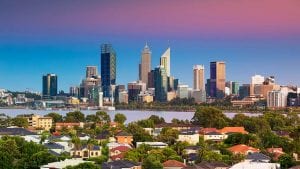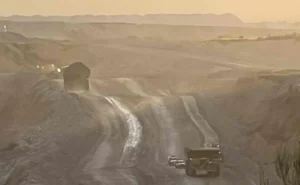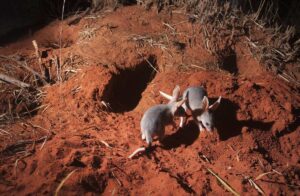Queenslanders head to the polls this Saturday. Given that event I thought I’d focus my commentary about the October edition of Green Energy Markets’ Renewable Energy Index on some of data relevant to that election’s policy issues.
Queenslanders face a very stark choice on energy policy between the Liberal-National Party on one side and Labor on the other.
If Labor are elected they have promised to follow through on a program already underway to underwrite 400MW of renewable energy projects. Following on from this 400MW program, Labor has said they will support a further 1000MW of renewable energy projects via a new government power company.
But perhaps more importantly they will look to construct new transmission infrastructure in Northern Queensland that would unlock a vast new province of wind, solar and hydro power projects.
These projects are already under active development by a range of private sector businesses that are independent of the dominant incumbent power companies.
On the other side, the Liberal-National Party has said they’ll unwind the existing renewable energy initiatives. Instead of encouraging the development of new renewable energy projects, they will “support” the construction of a new coal fired power station in Northern Queensland.
In the past this might have been seen as a choice between:
- idealistic but ultimately unrealistic hope from Labor in bright new shiny things that sound great but aren’t likely to work in practice; versus
- a less inspiring but ultimately more practical, dependable and proven option from the Liberal-National Party.
But things have changed.
Behind the push for a new coal-fired power station in Northern Queensland is perhaps a nostalgia that the region used to have one. That coal power station – Collinsville – was 190MW in size. If the media reportage is anything to go by, it also reflects a feeling the region is missing out because it has to import power from down south.
Yet the data gathered for our Renewable Energy Index indicates developments in renewable energy are putting that lost coal power station completely in the shade.
Our database shows that power stations currently under construction from Mackay northwards will within the next 12 to 18 months add 1062 MW of generating capacity to the grid.
The North Queensland region has more power generating capacity under construction than the entire state of NSW, and almost as much as Victoria, South Australia and Western Australia combined. It isn’t missing out any more.
Megawatts of renewable energy projects under construction at end of October 2017 by state

Source: Green Energy Market’s Renewable Energy Index
Also the reality is that households and businesses these days see generating their own power as more financially attractive than getting it from the grid. The construction of a new coal fired power station is likely to take at best 5 years and probably more like 7 years before it’s operational.
The October edition of the Renewable Energy Index shows the country installed 106MW of solar PV on household and business rooftops in a single month. That can be expected to wipe out electricity demand for big centralised generators equivalent to 27,893 households.
Expected generation from solar systems installed over October in terms of number of households’ power consumption

Source: Green Energy Market’s Renewable Energy Index
From January to October, Queensland alone installed 234MW of rooftop solar PV. If the state were to maintain this level of installations, within the 7 years that a coal fired power station might be built the state would have added almost 2,000MW of rooftop solar. The state’s peak electricity demand is about 10,000MW and its average demand is 6,000MW.
Meanwhile it already has more than 8,000MW of coal, about 2,000MW of rooftop solar already in place, not to mention just under 4,000MW of gas and hydro plant, as well as the 1,876MW of large-scale wind and solar farms under construction.
What is going to make room to allow for this new coal fired power station to keep busy?
One of the key rationales behind the push for another coal fired power station in Queensland is that it will support employment. Yet renewable energy projects deliver employment as well. The October edition of the Renewable Energy Index shows that renewable energy projects currently under construction in Queensland will support 5,847 full time job-years. The projects north of Mackay will make up almost 3000 of those job years.
Job-years created by renewable energy projects currently under construction by state and fuel -as at end of October 2017

So renewable energy is not just pie in the sky stuff – it’s a concrete reality.
So what about this new coal power station?
Well we’ve got an artist’s impression of such a plant prepared by fossil fuel public relations advocate Nathan Vass (who says no one is funding his public relations activities in support of the coal industry).
But in terms of on the ground activity there isn’t actually any company out there that’s even bothered to put in a development application for such a power plant nearby to Townsville.
And that’s where it becomes apparent this is the proposal that’s actually pie in the sky stuff.
If you take the time to read the Liberal-National Party election policy platform you’ll find something interesting. On the opening page of the election policy they say they will “support” a new coal fired power station.
Dig a bit deeper and they say they will, “build with the private sector a high-efficiency, low-emissions coal-fired power station in North Queensland”. But the key thing left unresolved is exactly which private sector company is there that wants to build such a power station?
The other thing is that when the LNP say they intend to “support” such a power station, they don’t mean they’ll help fund one. Instead turn to page 9 of their election policy glossy and you find out that “support” actually means, “facilitate development of a HELE coal-fired power station in North Queensland by fast- tracking regulatory approvals”.
I hate to break it to supporters of a new coal power station but that means Northern Queensland will not be getting a new coal fired power station if the LNP are elected on Saturday.
That’s because while a fast tracked planning approval is lovely, there just isn’t a credible private sector entity seeking such an approval. And if one were to emerge what they really need is money and lots of it. That just isn’t going to come from anyone who ultimately would like to get their money returned back to them.
Shoving what would need to be a very large coal power station into a market with 6000MW of average demand but 8000MW of pre-existing coal plus quite probably another 6000MW of renewable energy with zero fuel costs equals bankruptcy.
Tristan Edis is Director – Analysis & Advisory with Green Energy Markets. Green Energy Markets assists clients make informed investment, trading and policy decisions in the areas of clean energy and carbon abatement.
The analysis prepared for our Renewable Energy Index relies on underlying data and analysis within our STC-Solar and LGC market analytical subscription products as well as Global Roam’s NEM Review










